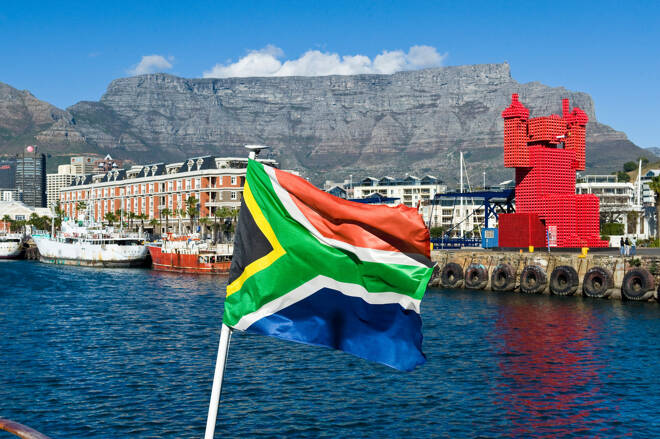Advertisement
Advertisement
African Sovereigns: Deeper, Co-ordinated Debt Relief Needed to Strengthen Credit Profiles
By:
Distressed African countries risk having weaker credit profiles for longer unless there are better co-ordinated debt restructurings. Any improvements need to overcome burden-sharing among more diverse creditor groups.
Delays in developing an enhanced framework for sovereign debt restructuring are preventing distressed countries from ensuring sustainable sovereign debt stocks and regaining access to international capital markets, leaving their sovereign credit ratings in default or near a default grade for longer periods. This adds to the human costs of default, contributing to risk of a lost decade of economic development.
Aligning how low and middle-income sovereign borrowers restructure debt owed to today’s more diverse array of creditors involves more protracted negotiations. Finding common ground between China and private investors for sharing information and fair treatment (Figure 1) is challenging. Multilateral creditors’ preferred credit status is another area of discussion as are the long-established practices of Paris Club official creditors setting the terms of debt restructuring.
China Adjusting Policies and Procedures
China is slowly adjusting its policies and procedures to align itself more with international standards while private-sector creditors are seeking access to IMF debt-sustainability analyses at earlier stages of the debt-restructuring process. Both represent steps forward. Fairer burden sharing with China as Africa’s largest lender and greater bargaining power for the private sector could raise their participation in debt workouts. This could cut financial losses for any specific group of participating lenders due to the involvement of more creditor groups, raising recovery rates for participating institutions.
Figure 1. Official-bilateral and private-sector borrowing accounts for the bulk of sub-Saharan external debt
USD bn
We have argued for the design of a “DSSI+” debt restructuring architecture – with significant burden-sharing involving the private sector and Chinese State-owned banks such as the Export-Import Bank of China – to solve debt crises. Such a DSSI+ model featuring more comprehensive debt forgiveness could more durably enhance the creditworthiness of select borrowers by remedying a long-standing problem of doing too little, too late to comprehensively restructure Africa’s debt.
Creditors Yet to Put Common Approach Into Practice
Testing the robustness of any enhanced debt-restructuring framework based on formal rules, goodwill and information sharing is the most pragmatic way ahead but considerable challenges remain. One or more stakeholders could contest the macro-fiscal assumptions underlying any IMF debt-sustainability assessment given uncertainties inherent to forecasting. The IMF’s segmentation of conclusions around debt sustainability into market-access and low-income countries is contested. Furthermore, creditors might agree on a common approach but opportunistically make exceptions for individual nations.
China’s à la carte approach has highlighted the problem by taking part in the official creditor committees of Ghana and Zambia but refusing to be a member of one for Sri Lanka.
Should such inefficiencies remain, which is likely not least given the political dimension of debt re-negotiations, they raise the ultimate costs of sovereign debt workout. Today’s varying, complex debt-relief processes result in laborious creditor coordination, lengthy discussions and less predictable outcomes – reducing prospects of timely and effective debt restructuring.
However, debt relief alone would not be enough to durably enhance long-run credit outlooks. The experiences after the Heavily Indebted Poor Countries (HIPC) Initiative of the late 1990s and 2000s, which had cancelled a significant share of public borrowing of many African sovereign borrowers, demonstrate this.
African governments need to use future windfalls from possible debt-relief programmes responsibly, strengthening debt management and sustaining reforms initiated during IMF-supported adjustment programmes. Improving the transparency and effectiveness of the budgeting process is crucial, among other reforms, to help stabilise public finances and avoid unsustainable increases in debt when financial conditions are loose (Figure 2).
Figure 2. Sub-Saharan Africa’s debt burden tends to rise when US financial conditions ease*
USD bn (LHS), % (RHS)
For a look at all of today’s economic events, check out our economic calendar.
Thomas Gillet is a Director in Sovereign and Public Sector ratings at Scope Ratings GmbH. Dennis Shen, Senior Director, Scope Ratings, and Thibault Vasse, Associate Director, Scope Ratings, co-wrote this commentary.
About the Author
Thomas Gilletcontributor
Thomas Gillet is a Director in Scope’s Sovereign and Public Sector ratings group, responsible for ratings and research on a number of sovereign borrowers. Before joining Scope, Thomas worked for Global Sovereign Advisory, a financial advisory firm based in Paris dedicated to sovereign and quasi-sovereign entities.
Advertisement
